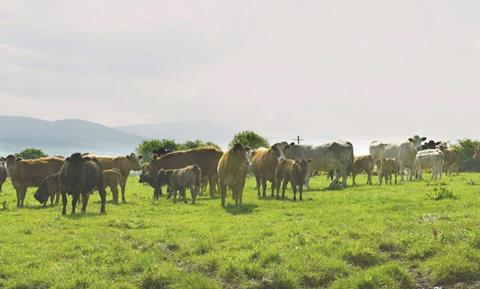Scottish prime cattle producers have seen prices climb by 5% since the start of April, although producer prices remain 5% lower than last year, according to the latest analysis by Quality Meat Scotland (QMS).

With the exception of February, when the kill was 6% higher than last year, Scottish abattoirs have handled very similar numbers of cattle to last year over the first quarter.
Steer numbers have, however, been lower and it is the significant increase in heifer slaughtering that has maintained slaughter volumes.
However, during April supplies began to tighten up but the volume of beef available is being helped by increases in carcase weights of 3-4kg per animal.
“With the average Scottish carcase weight for steers creeping above 380kg, the implication is that higher numbers of steers will be falling outside the ideal retail weight limit,” said Stuart Ashworth, QMS director of Economics Services.

“The average carcase weight of Scottish heifers does, though, remain well below the benchmark 380 kg,” he added.
Weekly abattoir throughputs across the UK, as a whole, were also higher during January and particularly February than in 2018 but have tightened since then.
“During April, the UK weekly kill of prime cattle was 1% lower on the year,” said Ashworth.
“Consequently, April was the first month in 2019 when UK beef production fell below last year’s levels.”
According to Ashworth, this tightening of the pool of prime cattle is likely to continue for the foreseeable future as Scottish calf registrations during 2017, and currently reaching slaughter age, were 0.25% lower than in 2016.
Imports/Exports
With regard to exports, the UK is not a big exporter of beef but did see an increase during January and February 2019.
Imports dipped slightly, although delivery volumes from the Republic of Ireland were maintained at the expense of other smaller suppliers like Poland, France, Namibia and Botswana.
“Because of the extra volume of domestically produced beef, the net beef supply during January and February wasn’t much different from a year ago.
“With retail sales of fresh and frozen unprocessed beef under pressure in the first quarter of the year, the home market remained well supplied pressurizing wholesale and farmgate prices.” commented Ashworth.
This story was originally published on a previous version of the Meat Management website and so there may be some missing images and formatting issues.















